Table of contents
Create a culture that means business™
Schedule a demo with an Achievers solution expert today.
Employee retention software can’t solve everything — but it’s a smart place to start.
When you’re trying to keep top talent engaged and off the job boards, the right platform can offer something no spreadsheet ever could: insight. These tools dig into the patterns behind employee behavior, flag the risks, and help you turn feedback into action.
And it’s not just theory. In fact, Gallup research tells us that nearly half of employees are actively looking for a new job. That’s a tough stat to ignore, and a clear signal that retention deserves more than just good intentions.
Whether you’re building a strategy from scratch or looking to upgrade your tech stack, today’s employee retention software gives you options.
These are the 15 platforms making waves in 2025. Ready to find the right fit for your company? Let’s go!
Top 15 employee retention software platforms
1. Achievers
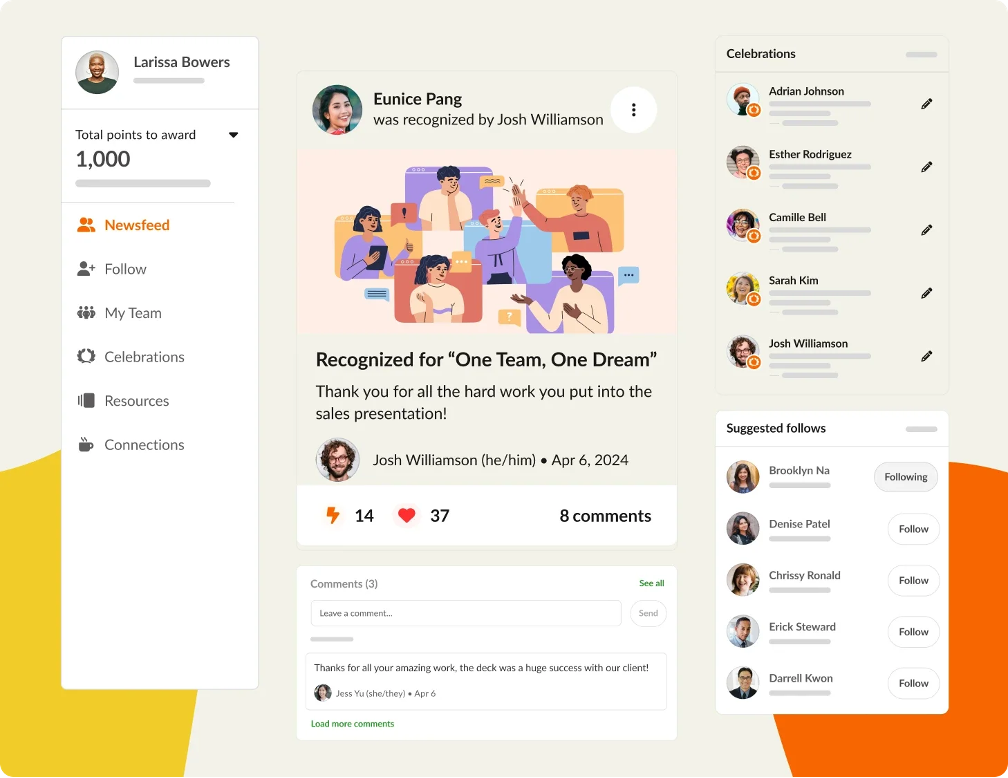
Achievers is recognition and rewards software designed to drive retention through consistent, meaningful engagement. It makes recognition easy — not just for HR leaders, but for everyone. With 93% global employee adoption and an average of 13 recognitions per employee per year, Achievers users recognize twice as often as those on other platforms, leading to 5x the impact on engagement, performance, and retention.
The platform is built to scale globally, with a multilingual experience and rewards fulfillment in nearly 190 countries — no customs, markups, or surprise fees. Employees can recognize and redeem from anywhere, using tools they already rely on, thanks to software integrations with platforms like Workday and Microsoft Teams. For HR leaders, Achievers offers deep, self-serve insights and AI-powered analytics to make smarter, faster decisions about culture, performance, and retention strategy.
And it’s not just the platform that stands out. It’s also the partnership. Achievers offers award-winning 24/7 support in 200+ languages, a library of on-demand recognition campaigns, and a dedicated success team to guide you from implementation to sustained impact.
G2 rating: 4.7/5
Key features:
- Employee recognition: Achievers Recognize™ makes it easy to celebrate accomplishments, big and small, with social, peer-to-peer, and manager-driven recognition that’s embedded into your workflow.
- Listening tools: Voice of Employee offers custom surveys, polls, and always-on feedback channels to help surface insights and drive real-time action.
- Employee rewards: Achievers Reward™ connects recognition to real impact, with a global marketplace of 3M+ reward options and no markups.
- Employee connections: With features that bring distributed teams together, Achievers helps employees build meaningful relationships across roles, regions, and time zones.
- Milestone celebrations: From service anniversaries to major achievements, Celebrate ensures employees feel valued at every stage of the journey.
“I think what stands out most about Achievers is their commitment to creating a positive and engaging workplace culture. Their focus on employee recognition and fostering strong, meaningful connections sets them apart. They prioritize creating an environment where people feel valued, appreciated, and empowered, whether through peer-to-peer recognition programs or leadership initiatives. That level of investment in employee satisfaction can boost morale and overall productivity.” — Samantha Z., Flight Communications Officer, G2
2. SurveyMonkey
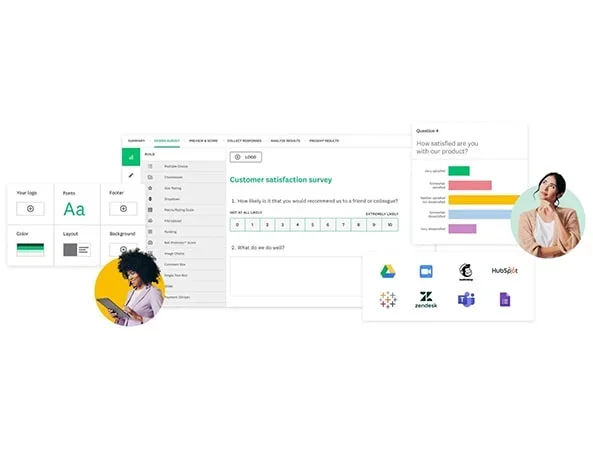
SurveyMonkey helps organizations collect employee feedback and keep a pulse on engagement. With its survey tools, it helps teams check in on everything from satisfaction to sentiment, making it easier to spot red flags early and gather input to shape retention strategies.
It’s a great fit for teams looking for a flexible, user-friendly solution to streamline feedback. However, companies with more complex needs may find they need additional tools to turn those insights into action.
G2 rating: 4.4/5
Key features:
- Survey design tools: Includes various tools for designing surveys with multiple question types, logic branching, and customization options.
- Analytics and insights: Analytics that include real-time reporting, trend analysis, and benchmarking to measure employee sentiment and engagement.
- Ease of deployment: Quick deployment of surveys through multiple channels (email, web, etc.) and intuitive respondent management features.
“I found SurveyMonkey to be an excellent resource for building and generating somewhat simple research surveys it fulfill a variety of objectives and needs. Granted, I was either utilizing the free and then the basic level, which was understandably limited. For a novice, this is an amazing resource, though it can become challenging if experience in modeling is low.” — Gabriel, Senior Digital Strategist, via Capterra
3. Motivosity
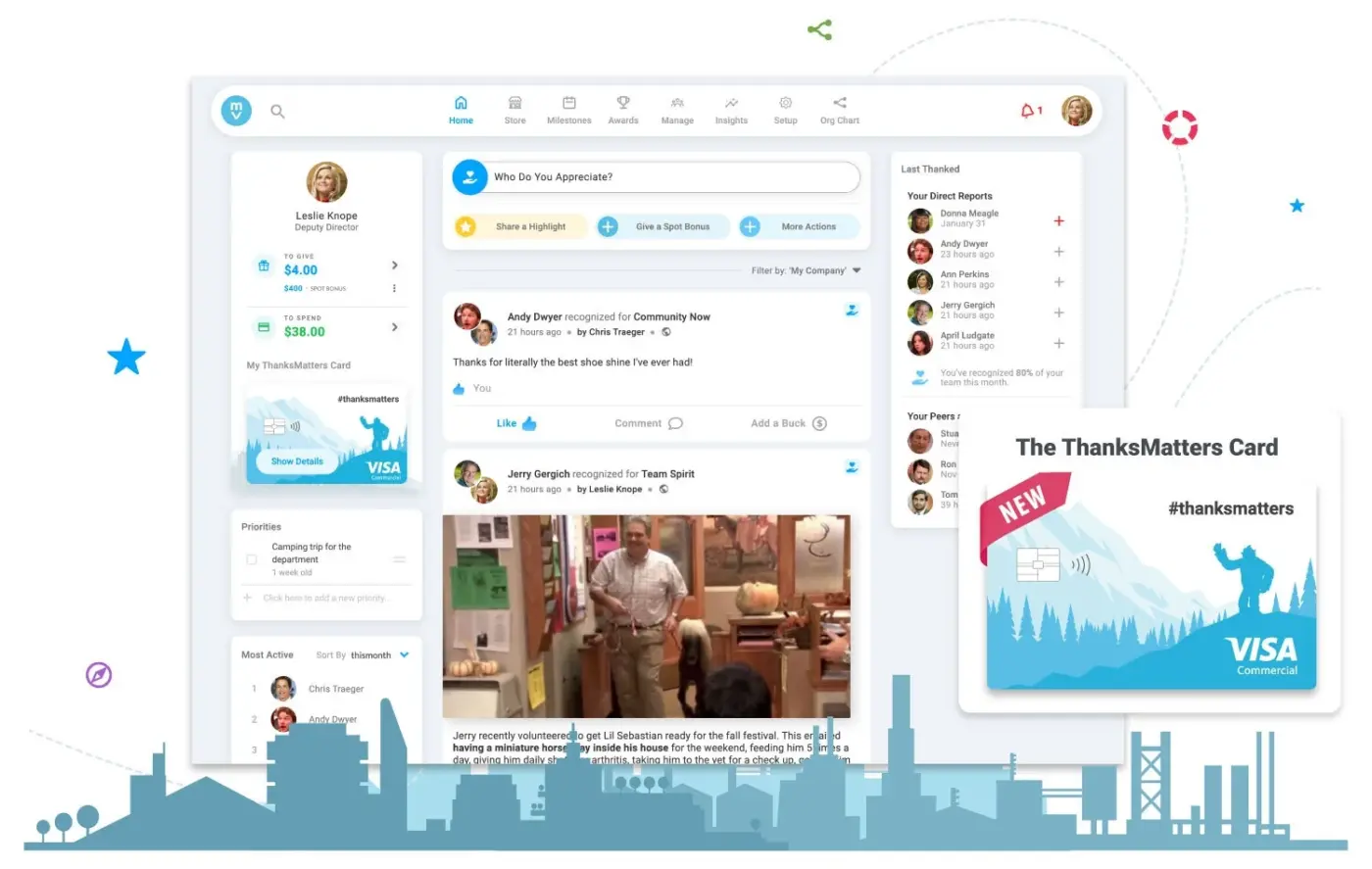
Motivosity is employee retention software focused on building a culture of appreciation through peer-to-peer recognition. It makes it easy for employees to highlight everyday wins, leave comments, and foster connection across teams.
While Motivosity offers strong recognition tools, setup and integration may take some planning for more complex environments. Early adoption can also require a bit of upfront effort, especially in larger or distributed teams.
G2 rating: 4.7/5
Key features:
- Peer-to-peer recognition: Enables employees to publicly recognize their peers for their contributions.
- Rewards and incentives: Provides a platform for distributing rewards and incentives based on peer recognition.
- Employee feedback: Allows for feedback and comments on recognition, fostering a culture of appreciation.
“This is a great solution to our goal of engaging remote employees and still connecting with each other. The admin side isn’t as user friendly, but it’s a great product!” — Review via Gartner
4. BambooHR
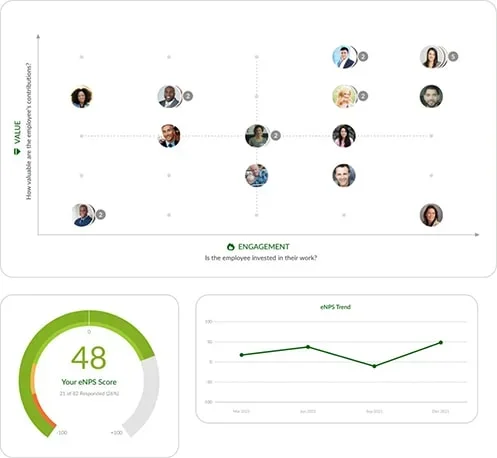
BambooHR focuses on simplifying core HR tasks. It combines a user-friendly interface with tools for performance management, onboarding, and employee self-service — helping organizations streamline operations and support employee engagement at the same time.
Customizable reporting gives HR teams visibility into workforce trends, and integrations with other tools help extend the platform’s reach. However, teams looking for built-in recognition and rewards may need to pair BambooHR with another platform to support those programs.
G2 rating: 4.4/5
Key features:
- Employee self-service: Allows employees to manage their personal information, time-off requests, and benefits, reducing administrative workload.
- Performance management: Helps with goal setting, performance reviews, and feedback, promoting continuous employee development.
- Onboarding and offboarding: Streamlines the onboarding and offboarding processes, ensuring smooth transitions for new hires and departing employees.
“BambooHR makes it much easier and less time consuming to do most of the administrative work of HR. The reports are super easy to pull, create and manipulate if needed to get the information I need to make informed decisions and presentations. I really like having (almost) everything HR in one place.” — Jennifer F., Director of People and Culture, via G2
5. Workhuman
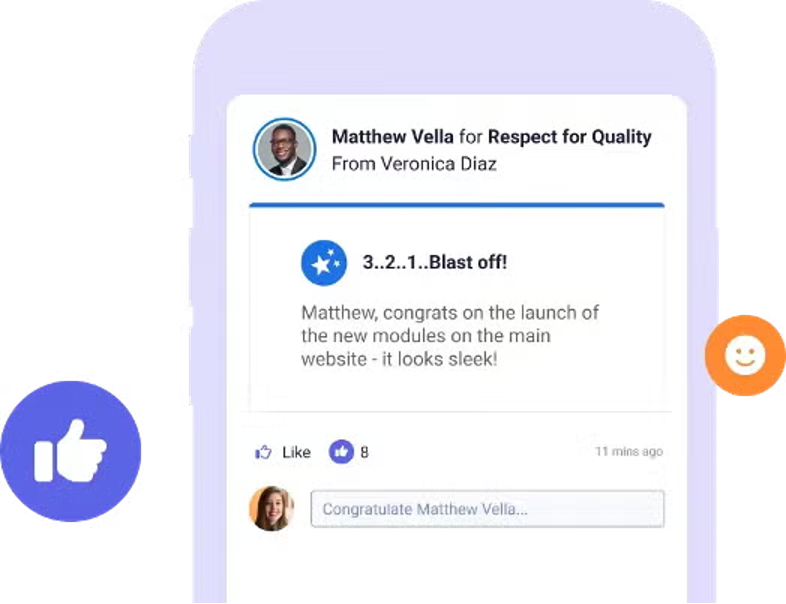
Workhuman provides employee retention software focused on recognition, connection, and culture-building. Its platform includes peer-to-peer recognition, milestone celebrations, and a rewards marketplace.
Its Human Intelligence™ engine turns recognition data into actionable insights, helping leaders spot trends and strengths across the organization. Organizations looking for tools beyond recognition, such as performance enablement or structured feedback, may need to look for solutions that can round out the employee experience.
G2 rating: 4.7/5
Key features:
- Social recognition: Peer-to-peer recognition to drive culture, engagement, and retention.
- Milestone and life event celebrations: Tools for celebrating anniversaries and personal moments to deepen connection and belonging.
- Insights & analytics: AI-powered dashboards that track recognition trends, participation, and links to key outcomes like turnover and performance.
“Associates are pleased with the program. It is simple to use, provides timely feedback and allows us to reward individuals for “outside the box” thinking, outstanding customer service, or significant contributions to our team.” — Pamela, Verified reviewer, via Software Advice
6. Awardco
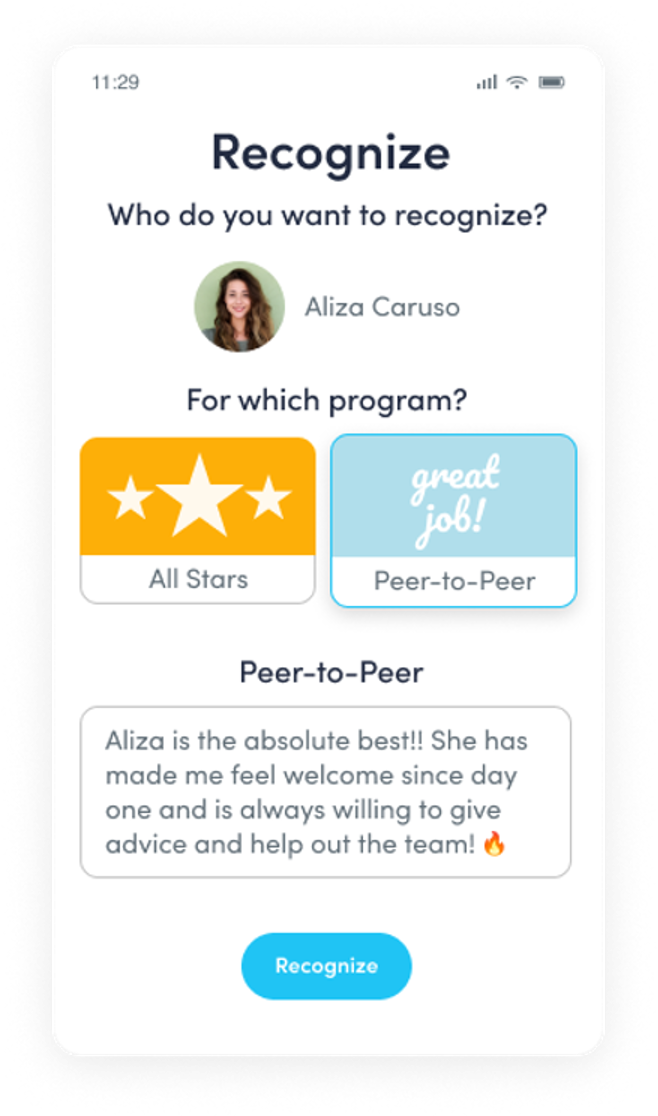
Awardco is an employee rewards and recognition platform designed to help organizations build culture, incentivize performance, and engage teams at scale. Known for its flexibility and global reach, Awardco offers tools for spot recognition, milestone celebrations, incentives, and perks — all supported by a large, configurable rewards network.
While Awardco covers many aspects of rewards and recognition, teams needing built-in performance tools, real-time feedback, or deeper engagement insights may want to consider platforms with a stronger focus in those areas.
G2 rating: 4.9/5
Key features:
- Flexible recognition tools: Support for spot recognition, nominations, and milestone celebrations.
- Global rewards marketplace: Wide variety of reward options with international shipping and fulfillment.
- Analytics and reporting: Insights into recognition trends, usage, and budget impact.
“This is a great tool to automate recognistions for service awards and birthdays and provides lots of customization for other Peer to Peer recognition programs. There is very little I like least. I wish there was more communication from our rep on what is on the roadmap.” — Amber, HRMS and Benefits Partner, via Capterra
7. O.C. Tanner
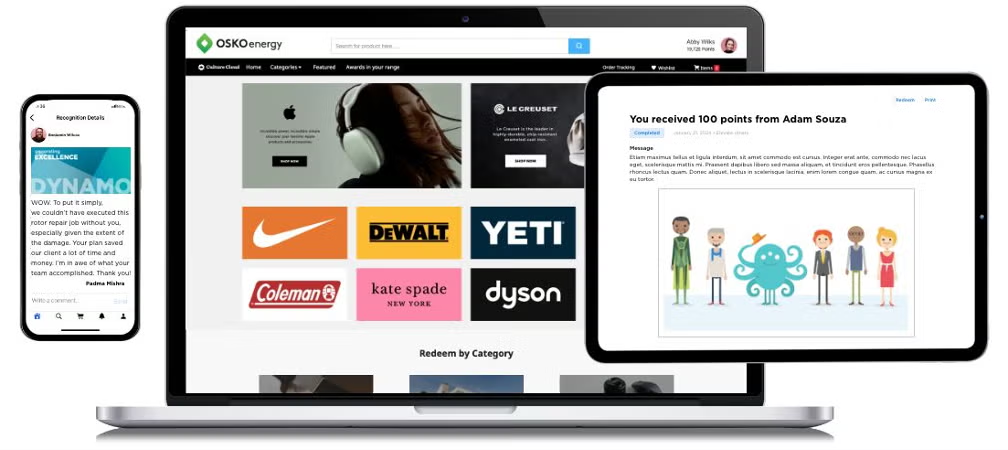
O.C. Tanner’s Culture Cloud® is built to help organizations create meaningful recognition moments at scale. The platform combines peer-to-peer and manager-led recognition with tools for celebrating milestones, running initiatives, and designing custom awards — all with a focus on strengthening company culture and employee connection.
While the platform offers customization options and symbolic recognition features, organizations with simpler recognition needs may find the setup and design process more hands-on than other platforms.
G2 rating: 4.8/5
Key features:
- Recognition at scale: Peer, manager, and milestone recognition across distributed teams.
- Custom awards and branding: Symbolic and personalized award experiences that reflect company culture.
- Celebrations and initiatives: Tools to support team challenges, culture campaigns, and company-wide events.
“The most helpful is to have several different recognition solutions in one place… Not so many downsides, but the recognitions options are very dependent on the location/country so there is a big difference between the awards options available for each individual from different regions – maybe more attention to have different and more partnerships in different locations would help.” — Vinicius M., Operations Manager, via G2
8. Reward Gateway
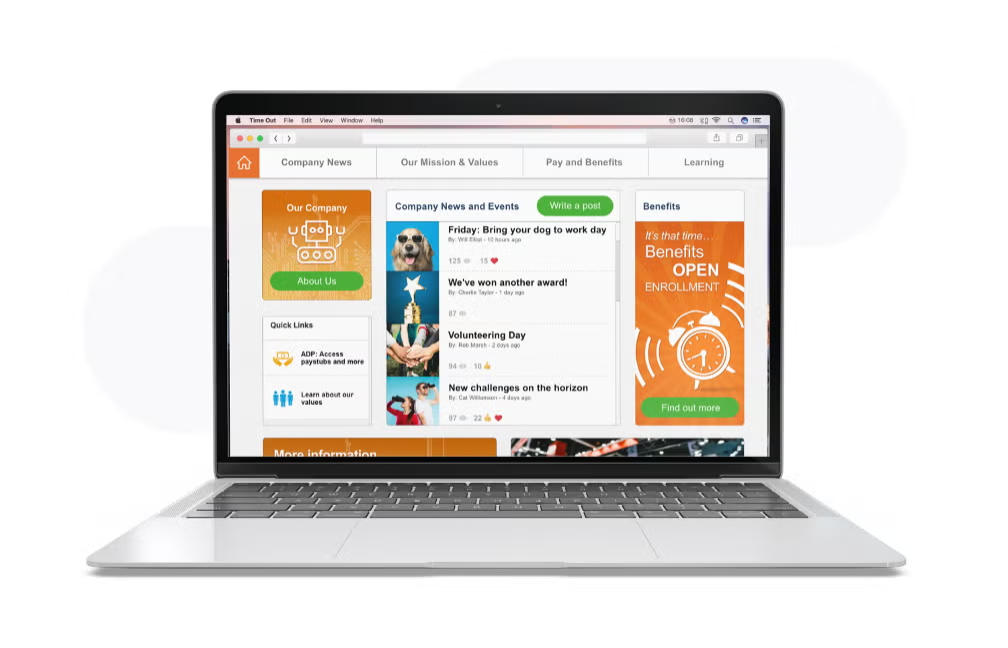
Reward Gateway | Edenred is an employee experience platform that combines recognition, rewards, well-being, communications, and employee discounts to help support engagement and retention. It offers a variety of tools, including peer-to-peer and manager-led recognition, branded eCards, and a rewards catalog with Amazon integration.
The platform also includes capabilities for internal communications, employee surveys, and well-being initiatives. However, if your team has more advanced needs around talent development or performance enablement, you might need to layer in additional tools to complement the recognition and engagement features.
G2 rating: 4.6/5
Key features:
- Communication and survey tools: Built-in platform for company updates, employee feedback, and engagement tracking.
- Custom branding options: Personalized platform design with tailored greetings, eCards, and award visuals.
- Well-being and discounts programs: Add-on tools for holistic engagement, including well-being content and employee discount access.
“I appreciate that we can acknowledge individuals at a company wide platform. I think we would benefit from greater support for ongoing implementation projects, flyers and advertisements created by RG to promote sales in the discounts and shopping arenas and general maintenance processes to streamline the system.” — Jennifer, Verified reviewer, via Software Advice
9. Bonusly
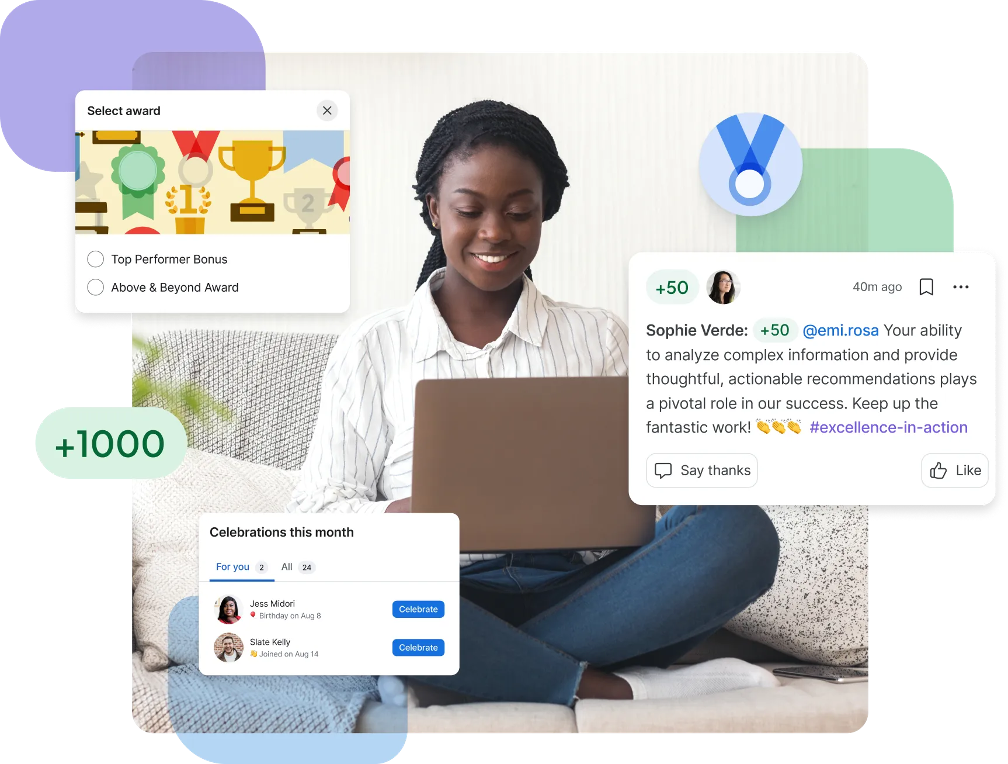
Bonusly is an employee recognition software platform focused on peer-to-peer engagement, performance visibility, and real-time appreciation. It combines recognition with goal tracking, rewards, and performance insights — helping teams celebrate wins and reinforce key behaviors.
Bonusly offers a range of engagement tools, from shoutouts and video messages to automated celebrations. However, organizations looking for more advanced engagement survey tools or broader performance enablement features may need to layer in other platforms.
G2 rating: 4.7/5
Key features:
- Peer-to-peer recognition: Real-time appreciation tools with shoutouts, emojis, and video messages.
- Milestone automation: Celebrate birthdays, anniversaries, and onboarding with scheduled recognitions.
- Reward points and catalog: Redeemable points with access to gift cards, cash, swag, and custom rewards.
“I like that all members of the organization receive a monthly amount of points that convert into real money of gifts. It also offers a wide selection of rewards, with various gift cards, charities, and even cash payment options through PayPal.” — Patrik Z., Software Engineer, via G2
10. Empuls
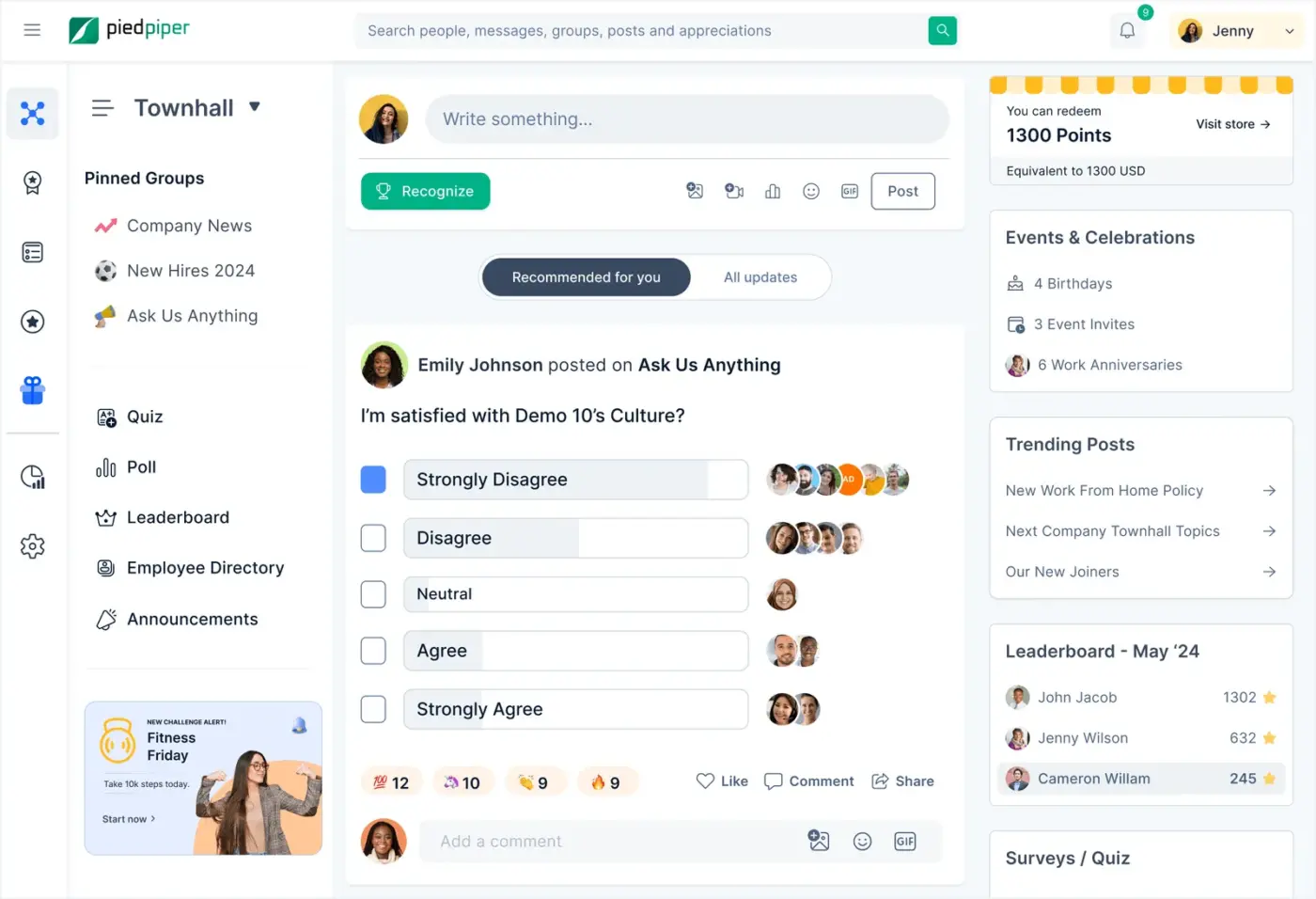
Empuls is employee retention software that focuses on building a more connected and motivated workforce through recognition, feedback, and data-driven engagement tools. The platform helps organizations create a culture where appreciation is part of the everyday experience.
Empuls includes customizable programs for rewards and recognition, as well as tools for running employee surveys and gathering feedback. For some organizations, setup and integration with existing HR or payroll systems may take a bit of planning, especially if customization is a priority.
G2 rating: N/A
Key features:
- Recognition and rewards: Enables seamless recognition and reward management, fostering a culture of appreciation and motivation.
- Feedback and surveys: The platform includes tools for conducting employee surveys and collecting feedback.
- Analytics and insights: Provides analytics and insights into employee engagement metrics, allowing organizations to track progress and identify trends.
“Empuls provides facility to encourage and appreciate our colleagues serving as a booster for continued growth and development. It also helps with custom wish quotes, sharing points as rewards, etc. which helps in boosting employees growth.” — Sri D., Associate Software Engineer, via G2
11. Leapsome
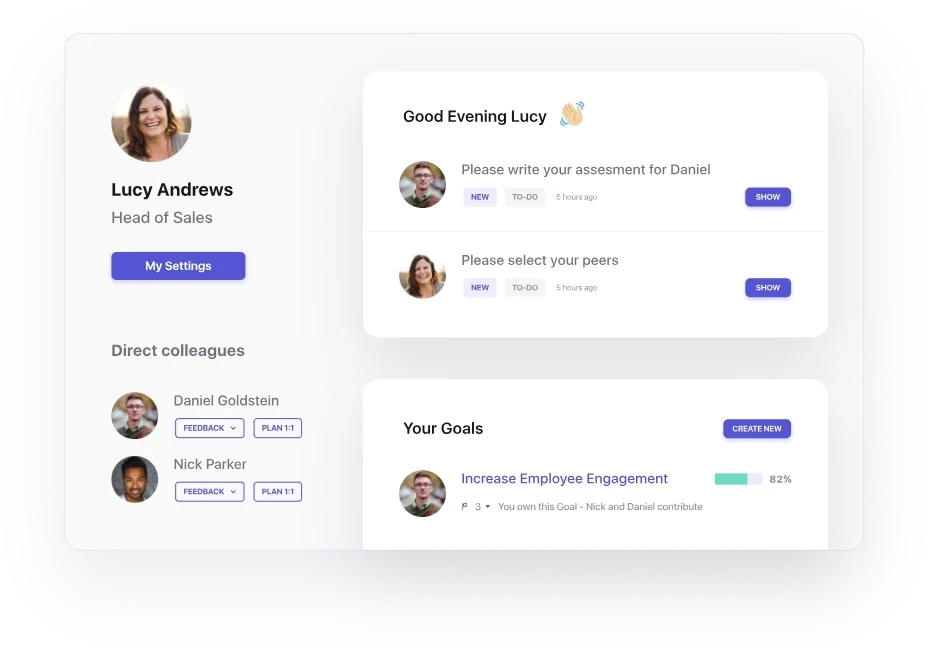
Leapsome is employee retention software that brings performance, engagement, and development together in a single platform. With tools for continuous feedback, goal setting, learning, and engagement surveys, it helps organizations build a more transparent employee experience.
It’s a strong fit for companies that want to connect individual development with broader business goals. For smaller teams, the platform’s depth may take a bit of time to set up and scale. And depending on your existing tech stack, integrations may require some upfront configuration.
G2 rating: 4.8/5
Key features:
- Continuous feedback and 1-on-1s: Enables real-time feedback exchange and encourages structured one-on-one meetings between managers and employees.
- Goal management: Helps in setting SMART goals, tracking progress, and aligning individual goals with organizational goals.
- Engagement surveys and analytics: Provides insights into employee engagement levels through surveys, with analytics to show trends and areas for improvement.
“I liked the simplicity of the software, the confidence booster it gives to fellow coworkers for there work performance. The positive feedback keeps them engaged in the program building there work performance up.” — Verified reviewer via Capterra
12. WorkTango
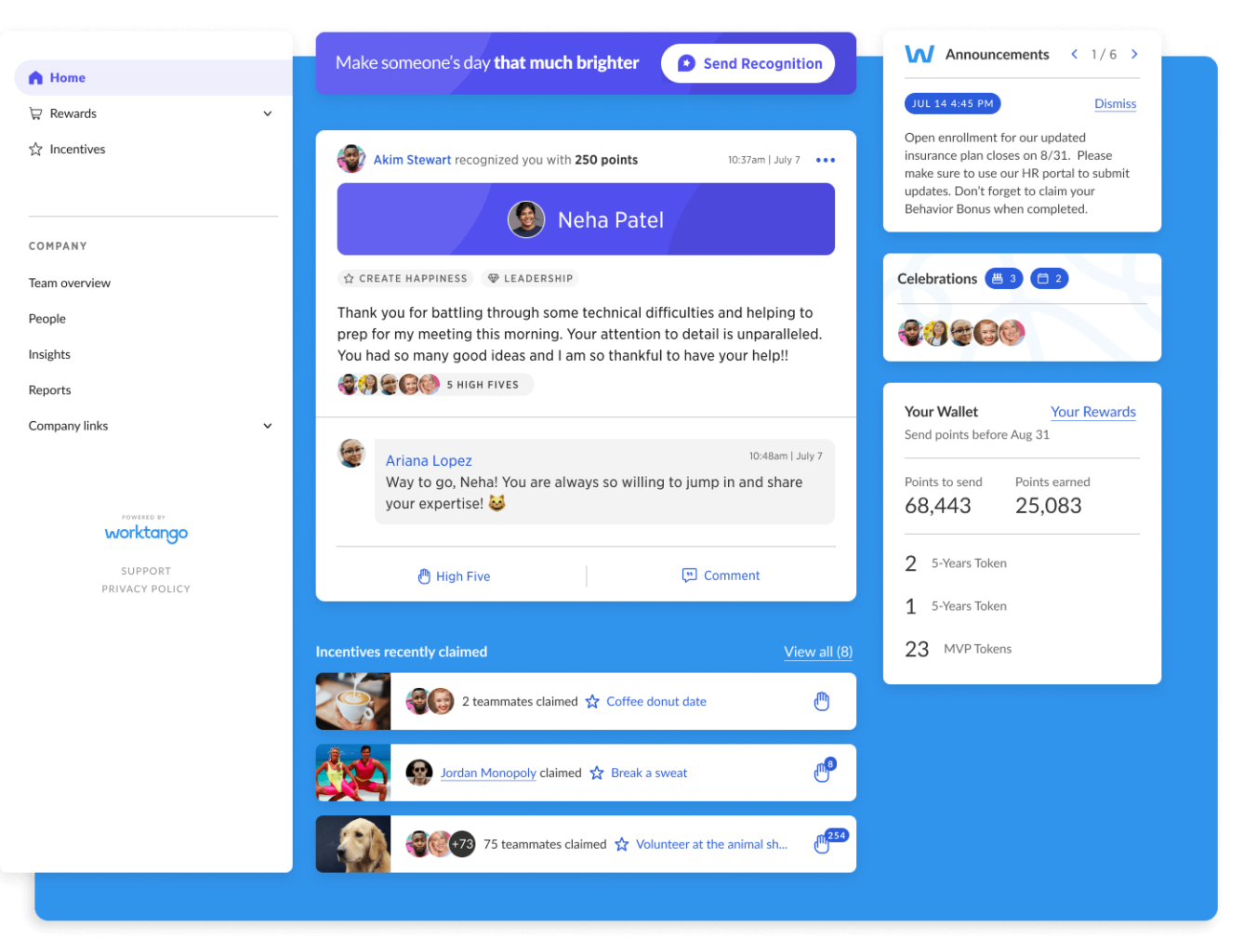
WorkTango offers employee retention software built around continuous feedback and engagement. The platform makes it easy for organizations to gather employee input through surveys, polls, and pulse checks — and turn that feedback into meaningful action.
While the platform is robust, users may need time to get up to speed on its full capabilities. Integration with existing systems may require some configuration, and pricing can vary based on company size and selected features.
G2 rating: 4.7/5
Key features:
- Real-time feedback: Offers real-time feedback capabilities, allowing organizations to address issues promptly and improve employee satisfaction.
- Action planning: Supports action planning based on survey results, helping organizations implement targeted improvements to retain talent effectively.
- Engagement analytics: Offers analytics that delve into engagement metrics, enabling data-driven decision-making and strategy refinement.
“Easy to implement, need little training for user and administrators. It saves lots of time for surveys and data analytics based on survey data, leads to better employee retainment and satisfaction.” — Review via Gartner
13. Cooleaf
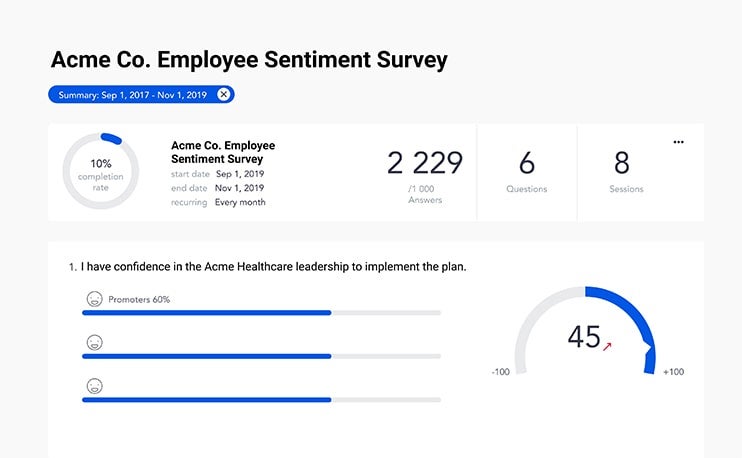
Cooleaf is employee retention software that uses recognition, rewards, and gamification to help organizations build a more engaged, motivated workforce. Through features like challenges, badges, and a points-based system, the platform brings a sense of fun and momentum to everyday work — all while reinforcing key behaviors and boosting morale.
The platform also lets you customize rewards programs to match your culture and goals. Depending on your organization’s setup, getting everything up and running may take added planning. Pricing can vary as well, which might be something for smaller teams to keep in mind.
G2 rating: 4.9/5
Key features:
- Gamification elements: Includes gamification features to create a fun and competitive environment that motivates employees.
- Customizable rewards: The platform allows organizations to create personalized reward programs tailored to their culture and employee preferences.
- Analytics dashboard: Offers an analytics dashboard that offers real-time insights into engagement trends and performance metrics.
“I enjoy the number of features like personalizing our profiles, joining community groups, weekly activities to encourage engagement, recognizing peers for their kindness, and all while getting to earn rewards. I frequently use this app and is fairly easy to use.” — Aracely R., Repo Specialist, via G2
14. Mo
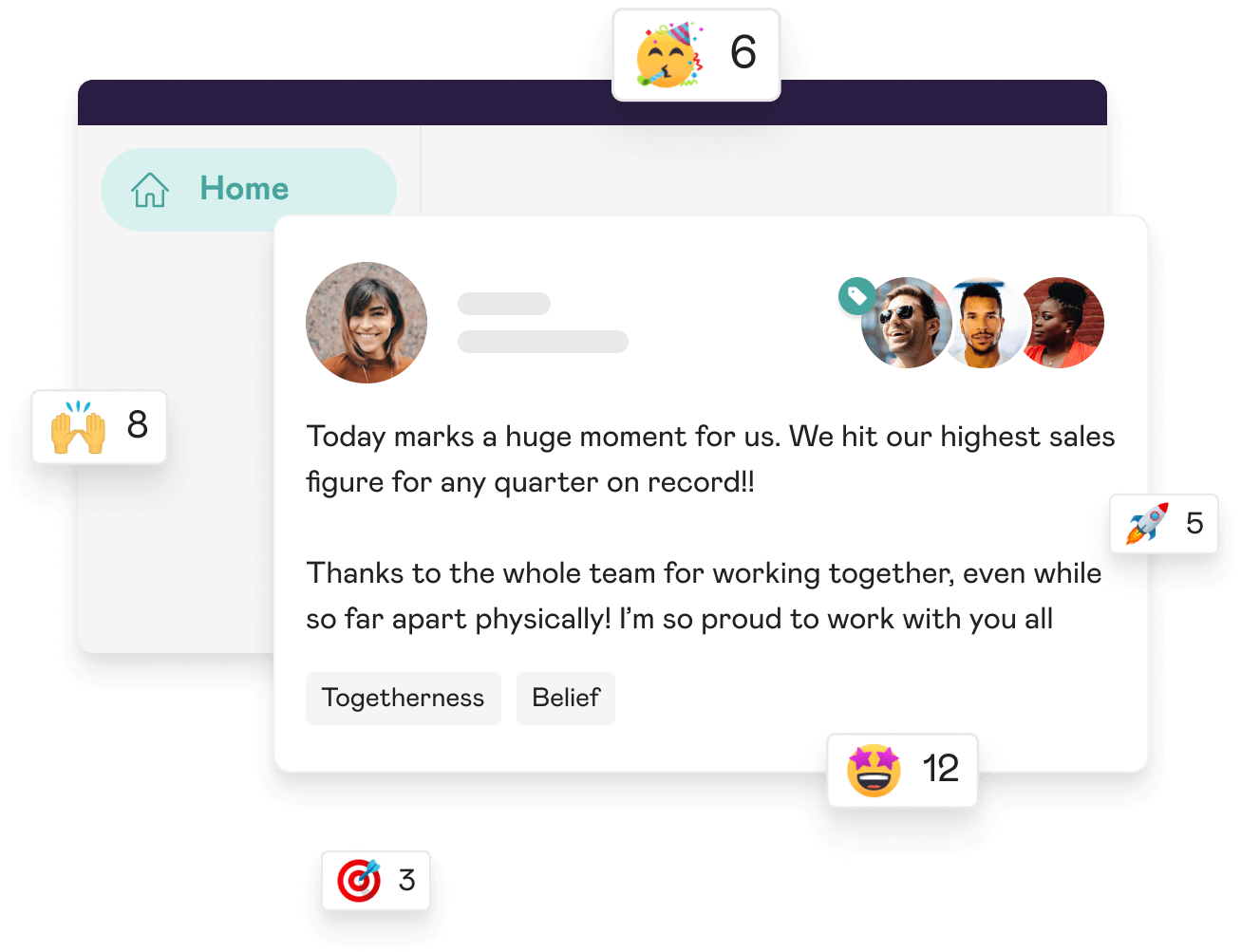
Mo is employee retention software built to boost engagement through real-time feedback, recognition, and customizable rewards. It’s designed to help teams stay connected and motivated by making it easier to celebrate great work, share feedback, and keep a pulse on engagement over time.
Depending on your setup, getting Mo fully integrated into your workflows might take a bit of coordination. And like many feature-rich platforms, there may be a learning curve. Pricing varies, which could be something smaller teams want to consider.
G2 rating: 4.6/5
Key features:
- Real-time feedback mechanism: Enables instant feedback loops between employees and managers, promoting continuous improvement and engagement.
- Recognition and rewards: Helps the seamless implementation of recognition programs, boosting morale and reinforcing positive behaviors.
- Performance analytics: Offers in-depth insights into employee performance metrics and engagement levels, aiding proactive retention strategies.
“This is an excellent and effective platform to acknowledge my work peers success and as a recognition between co-workers… I feel that monthly Mo’s point distributed among workers isn’t enough and would be better if administrator can set the limit themself.” — Baharom, Customer Support Manager, via Capterra
15. Nectar
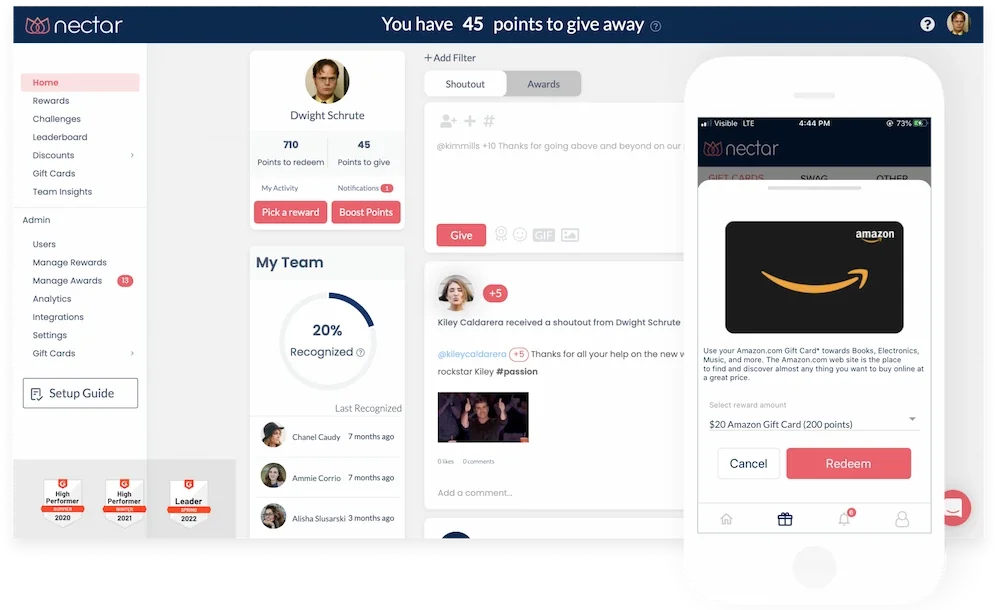
Nectar combines recognition, rewards, and feedback to help build a stronger culture and boost engagement. It gives organizations a central place to celebrate wins, gather employee input, and monitor engagement trends.
Built-in analytics offer visibility into sentiment and performance, helping HR teams take a more data-driven approach to keeping employees engaged. Depending on your team’s size and structure, setup and onboarding might take a bit of time, and some users have noted that customization options can feel somewhat limited.
G2 rating: 4.7/5
Key features:
- Employee recognition and rewards: Provides a structured platform for recognizing and rewarding employees based on achievements and contributions.
- Feedback and surveys: Enables organizations to gather employee feedback through surveys, encouraging continuous improvement and responsiveness.
- Performance analytics: Offers analytics on employee performance metrics, helping HR teams identify trends and areas for improvement.
“What I love most about Nectar is how simple and fun it makes recognition. Giving shoutouts with GIFs adds a personal, lighthearted touch that never gets old… If I had one wish, it’d be for more flexibility with PayPal withdrawals. Having to create a PayPal account tied to my work email wasn’t ideal, and a bit of added control here would go a long way” — Max L., IT Engineer, via G2
Retention starts with the right platform
There’s no one-size-fits-all when it comes to retention, because no two workplaces are the same. The best employee retention software is the one that fits how your people work, what they care about, and where your company is headed.
Think about what matters most: Is it easier ways to recognize great work? Better tools for gathering feedback? A clearer picture of what’s driving engagement — or holding it back? Look for a platform that feels intuitive, flexible, and built for the real world, not just the wish list. And when in doubt, book a demo. Seeing the platform in action is the best way to understand how it fits your people, workflows, and future plans.
*Information and pricing in this blog post was sourced from each vendor’s website.



